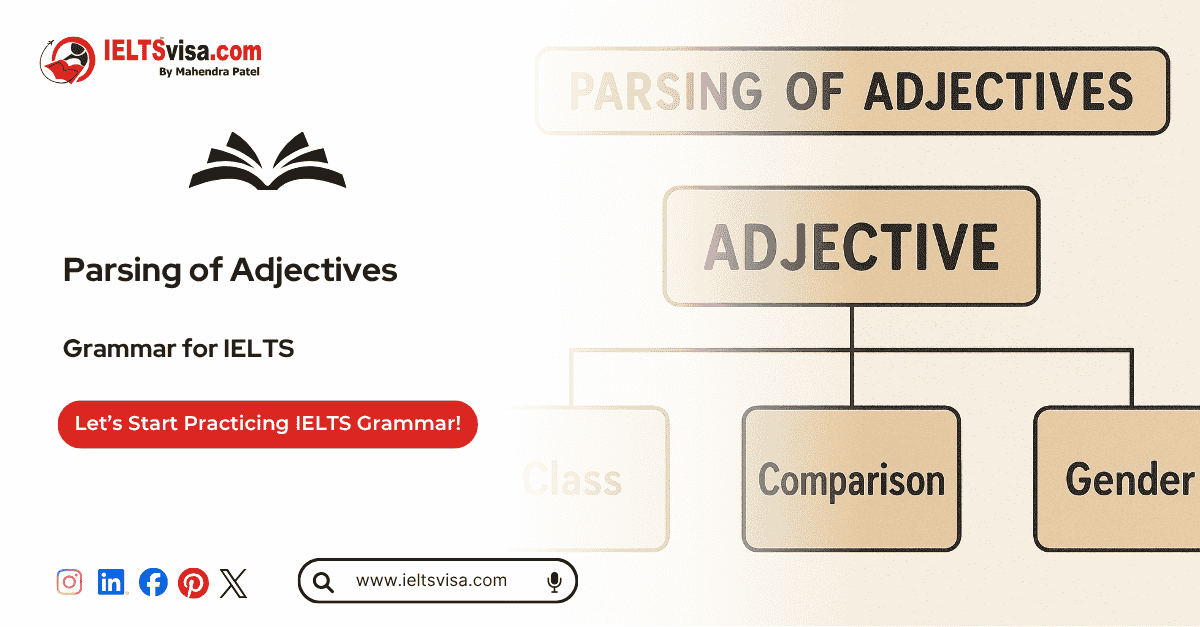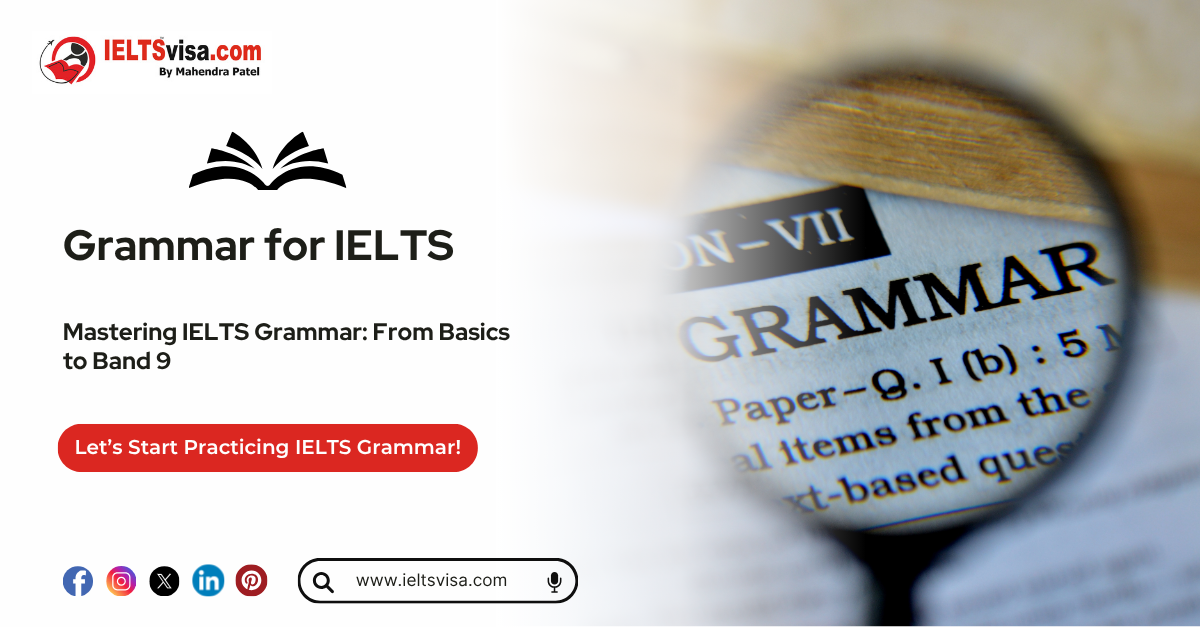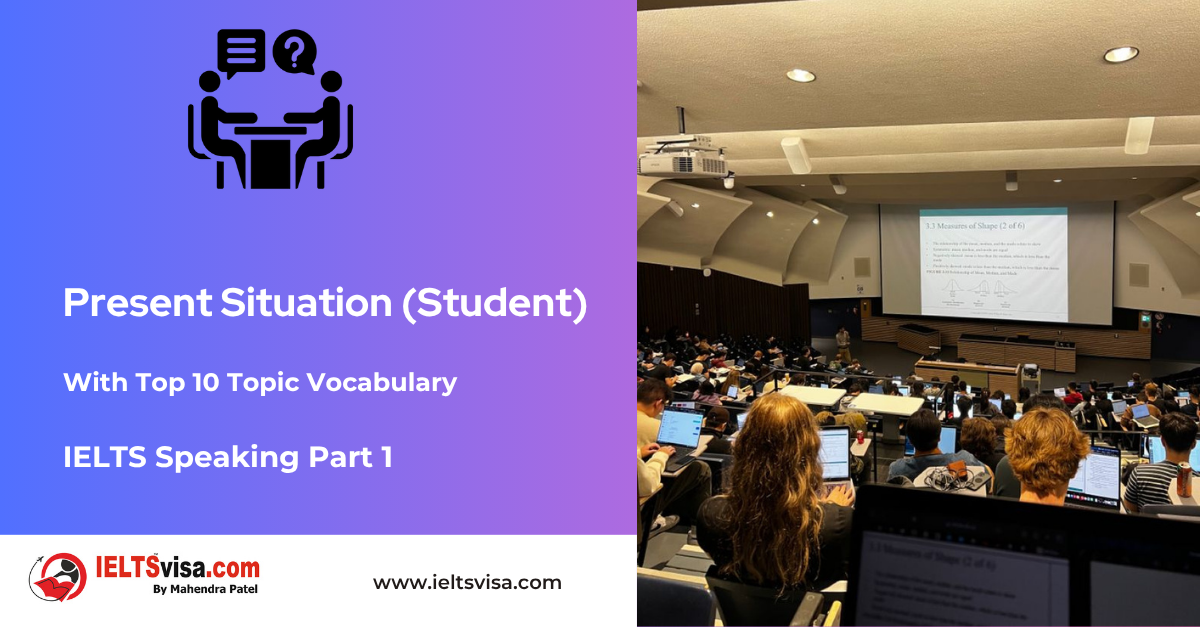Parsing of Adjectives
Grammar for IELTS

Parsing of Adjectives
Parsing adjectives is a way of analyzing and breaking down adjectives in a sentence to understand their role, form, and function. It helps learners identify the type of adjective, its agreement with the noun it describes, and its position in the sentence. Let’s explore this topic in a simple yet detailed manner so you can master parsing adjectives with ease!
Table of Contents
- What Is Parsing of Adjectives?
- How to Parse Adjectives: Step-by-Step Guide
- Types of Adjectives for Parsing
- Examples of Parsing Adjectives
- Practice Parsing Adjectives
- Frequently Asked Questions on Parsing Adjectives
What Is Parsing of Adjectives?
Parsing an adjective means identifying:
-
- The type of adjective (e.g., descriptive, demonstrative, possessive).
- The word it modifies (the noun or pronoun).
- Its degree of comparison (positive, comparative, or superlative).
- Its position in the sentence (attributive or predicative).
This process helps you analyze how an adjective contributes to the meaning and structure of a sentence.
How to Parse Adjectives: Step-by-Step Guide
1. Identify the Adjective
Find the word in the sentence that describes or modifies a noun or pronoun.
Example: The beautiful garden is blooming.
-
- Adjective: beautiful
2. Determine the Noun or Pronoun Modified
Identify the noun or pronoun that the adjective is describing.
-
- In the example, “beautiful” modifies the noun “garden.”
3. Classify the Type of Adjective
Decide what kind of adjective it is:
-
- Is it descriptive, demonstrative, possessive, interrogative, or another type?
- Beautiful is a descriptive adjective.
4. Check the Degree of Comparison
Determine whether the adjective is in the positive, comparative, or superlative form.
-
- Beautiful is in the positive degree.
5. Analyze Its Position
Look at its placement in the sentence:
-
- Attributive: Directly before the noun (beautiful garden).
- Predicative: After a linking verb (The garden is beautiful).
- In this case, ‘beautiful’ is an attributive adjective.
Types of Adjectives for Parsing
Adjectives can belong to various types, each with a unique role. While parsing, you’ll classify them based on these categories:
1. Descriptive Adjectives
Describe the quality, size, shape, or other characteristics of a noun.
-
- Example: The tall tree provides shade.
- Parsing: tall is a descriptive adjective modifying tree.
- Example: The tall tree provides shade.
2. Demonstrative Adjectives
Point out specific nouns. Examples: this, that, these, those.
-
- Example: I like this book.
- Parsing: this is a demonstrative adjective modifying book.
- Example: I like this book.
3. Possessive Adjectives
Show ownership. Examples: my, your, his, her, our, their.
-
- Example: Her cat is very playful.
- Parsing: ‘Her’ is a possessive adjective modifying ‘cat’.
- Example: Her cat is very playful.
4. Interrogative Adjectives
Used in questions. Examples: which, what, whose.
-
- Example: Which dress do you like?
- Parsing: Which is an interrogative adjective modifying dress.
- Example: Which dress do you like?
5. Numeral Adjectives
Indicate numbers or order. Examples: one, two, first, second.
-
- Example: He has three dogs.
- Parsing: three is a numeral adjective modifying dogs.
- Example: He has three dogs.
6. Indefinite Adjectives
Indicate an unspecified quantity. Examples: some, many, few, several.
-
- Example: Many students attended the seminar.
- Parsing: Many is an indefinite adjective modifying students.
- Example: Many students attended the seminar.
Examples of Parsing Adjectives
Let’s parse the adjectives in the following sentences:
1. Sentence: The red apple looks delicious.
-
- Adjective: red
- Type: Descriptive
- Modifies: apple
- Degree: Positive
- Position: Attributive
2. Sentence: She bought three dresses.
-
- Adjective: three
- Type: Numeral
- Modifies: dresses
- Degree: Positive
- Position: Attributive
3. Sentence: This car is faster than that one.
-
- Adjective 1: This
- Type: Demonstrative
- Modifies: car
- Degree: Positive
- Position: Attributive
- Adjective 1: This
-
- Adjective 2: faster
- Type: Descriptive
- Modifies: car
- Degree: Comparative
- Position: Predicative
- Adjective 2: faster
Practice Parsing Adjectives
Parse the adjectives in the following sentences:
1. The big house at the corner belongs to my uncle.
2. Several birds were perched on the old tree.
3. Whose bag is lying on the floor?
4. That new phone is very expensive.
5. He bought five apples and two oranges.
Answers
1. big – Descriptive; modifies house; positive degree; attributive.
2. Several – Indefinite; modifies birds; positive degree; attributive.
old – Descriptive; modifies tree; positive degree; attributive.
3. Whose – Interrogative; modifies bag; positive degree; attributive.
4. That – Demonstrative; modifies phone; positive degree; attributive.
new – Descriptive; modifies phone; positive degree; attributive.
expensive – Descriptive; modifies phone; positive degree; predicative.
5. five – Numeral; modifies apples; positive degree; attributive.
two – Numeral; modifies oranges; positive degree; attributive.
Frequently Asked Questions on Parsing Adjectives
Q1: What does it mean to parse an adjective?
Parsing an adjective means analyzing its type, the noun or pronoun it modifies, its degree of comparison, and its position in the sentence.
Q2: What types of adjectives can be parsed?
All types, including descriptive, demonstrative, possessive, numeral, interrogative, and indefinite adjectives, can be parsed.
Q3: Why is parsing adjectives important?
Parsing adjectives helps improve your understanding of grammar and makes it easier to construct meaningful and grammatically correct sentences.
Q4: What’s the difference between attributive and predicative adjectives?
-
- Attributive: Comes before the noun (The green car).
- Predicative: Comes after a linking verb (The car is green).

Our Books
Master IELTS Speaking Part 1
IELTS Writing Task 1 Book
IELTS Writing Task 2 Book
Practice IELTS Other Modules
IELTS Listening
The IELTS Listening test assesses how well you can understand spoken English in various contexts. It lasts about 30 minutes and is divided into four sections with a total of 40 questions. The listening tasks become increasingly difficult as the test progresses.
IELTS Academic Reading
The IELTS Academic Reading section assesses your ability to understand and interpret a variety of texts in academic settings. It is designed to evaluate a range of reading skills, including skimming for gist, reading for main ideas, reading for detail, understanding inferences, and recognizing a writer's opinions and arguments.
IELTS Speaking
The IELTS Speaking test assesses your ability to communicate in English on everyday topics. It lasts 11-14 minutes and consists of three parts: introduction, cue card, and a discussion based on the cue card topic.
IELTS General Reading
IELTS General Reading tests your ability to understand and interpret various types of texts. Here are some key areas and types of content you can expect to encounter in the reading section, along with tips for effective preparation.
IELTS Academic Writing Task 1
In IELTS Academic Writing Task 1, you are presented with a visual representation of information, such as graphs, charts, tables, or diagrams, and you are required to summarize, compare, or explain the data in your own words.
IELTS General Writing Task 1
In IELTS General Writing Task 1, you are required to write a letter based on a given situation. The letter can be formal, semi-formal, or informal, depending on the prompt. Here’s a breakdown of the key components to include in your letter
IELTS Academic Writing Task 2
In IELTS Academic Writing Task 2, you are required to write an essay in response to a question or topic. Here’s a guide to help you understand the essential elements of this task
IELTS Exam Tips
To succeed in the IELTS exam, practice regularly, familiarize yourself with the test format, improve your vocabulary, develop time management skills, and take mock tests to build confidence.
Grammer for IELTS
Grammar is the foundation of effective communication in English. Understanding tense usage, subject-verb agreement, and sentence structure enhances clarity and coherence in writing and speaking.
Vocabulary for IELTS
Vocabulary plays a crucial role in the IELTS (International English Language Testing System) exam, especially in the Speaking and Writing sections. Here’s an overview of why vocabulary is important and how it impacts your performance
RECENT IELTS SAMPLES QUESTIONS AND ANSWERS
IELTS Speaking Part 1 – Favourite Sujbect – Physics
IELTS Speaking Part 1 - Favourite Sujbect - Physics Q: What is your favourite subject? A: My favourite subject...
IELTS Speaking Part 1 – Present Situation (Student)
IELTS Speaking Part 1 - Present Situation (Student) Q1: Are you a student or do you work?A: I’m a full-time...
IELTS Speaking Part 1 – Present Situation – Employee – as an International Student and Social Worker
IELTS Speaking Part 1 - Present Situation - Employee - as an International Student and Social Worker Q1: Are...
IELTS Speaking Part 1 – Persent Situation – Employee- as an Electric Engineer
IELTS Speaking Part 1 - Persent Situation - Employee- as an Electric Engineer Q1: What do you do for a...
IELTS Speaking Part 1 – Persent Situation – Employee – as an Software Engineer
IELTS Speaking Part 1 - Persent Situation - Employee - as an Software Engineer Q1: What do you do for a...
IELTS Speaking Part 1 – Persent Situation – Married
IELTS Speaking Part 1 - Persent Situation - Married Q1: Are you married?A: Yes, I am married. My spouse and I...













